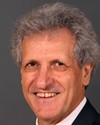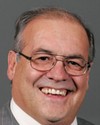While there was some conclusion, I was not, Mr. Volpe, part of that particular study. That's why Mr. Gravelle and Gerry are here. They were involved in this directly. André certainly was. And if you want to question us on the specific findings of that study, I will have to refer those questions to André, who has been part of that more than I have, at this time.
Evidence of meeting #23 for Transport, Infrastructure and Communities in the 40th Parliament, 2nd session. (The original version is on Parliament’s site, as are the minutes.) The winning word was study.
A recording is available from Parliament.



